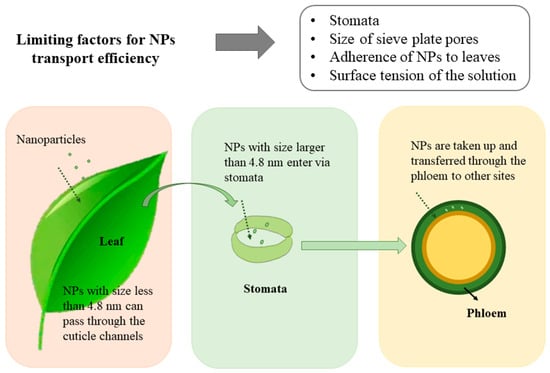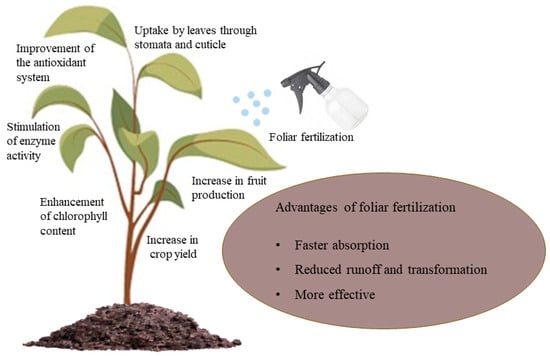It is estimated that 40 to 70 per cent, 80 to 90 per cent and 50 to 90 per cent of the conventional macronutrients N, P and K applied to soil are lost, respectively, resulting in considerable resource losses. Compared with traditional fertilizers, nano fertilizers have small volume (1-100 nm) and high specific surface area, and have the advantages of controlled release, high nutrient utilization, low cost and relatively small environmental pollution. The application of nanofertilizers is an emerging area of agricultural research and is an attractive and economical alternative to traditional fertilizers that could sustainably increase global food productivity. Foliar fertilization is a popular method to meet the needs of higher plants. Due to the small amount of leaf application, nutrient absorption is faster than the soil, and environmental pollution is relatively small, so it is more popular in plants. It can be seen that nano-fertilizer and foliar fertilization are the focus of attention at present, and the study on the foliar application of nano-fertilizer is not as extensive as that of soil application.
- nanofertilizers
- foliar fertilization
- heavy metal stress
- salt stress
- drought stress
1. The way of nano fertilizer entering the plant

2. Agricultural application of foliar nano-fertilizer

2.1. Improve crop yield and quality
2.2. Reduce environmental stress
2.2.1. Heavy Metal Stress
Heavy metals are absorbed by plants and accumulate in food crops for human and animal consumption, seriously endangering crop growth and human health [63\u201264]. Many studies have shown that nanoparticles can reduce plant stress to heavy metals [65\u201266]. Leaf application of SE and SI, NPK can alleviate metal stress of rice and improve the yield and quality of brown rice [67]. Spraying ZnO NPs on the foliage reduced Cd pollution and increased the plant height, biomass and chlorophyll concentration of maize plants [68]. Foliar application of TiO2NPs significantly reduced She content and CD-induced toxicity in stems. However, the application of TiO 2NPs to soil increased the absorption of Cd by corn in CD-contaminated soil [69]. In summary, the application of nano-fertilizer on the surface of leaves has a alleviating effect on soil heavy metal pollution, and may be more useful than soil application to a certain extent. However, it should be noted that the presence of heavy metals may promote the absorption and enrichment of nanoparticles in plants and produce co-toxicity, leading to food safety issues [70].
2.2.2. Salt stress
Salinity is considered to be one of the major abiotic stresses that limit crop yields globally. Salt stress limits growth, reduces biomass, causes chlorophyll degradation and alters the state of water [73]. Abdelaal et al proved that leaf surface application of silicon alleviated the adverse effects of salt stress on sweet pepper by improving water state, increasing photosynthetic rate, regulating certain osmotic pressure and plant hormones, and increasing antioxidant enzyme activity [75].Perez-Labrada et al. Foliar application of Cu nanoparticles enhanced salt tolerance by increasing the Na+/K+ ratio and stimulating the antioxidant mechanism of plants [77]. Sheikhalipour et al. proved that foliar application of Cs-Se NPs could increase photosynthetic pigment content in leaves, promote plant production, and reduce oxidative damage under salt stress by increasing SOD, POD and CAT enzyme activities [78]. Mustafa et al. found that leaf spraying with low-dose TiO2 nanoparticles could improve the germination characteristics, water and permeability potential of wheat, and help improve plant tolerance to salt stress [79]. Nano-silicon fertilizer plays a positive role in alleviating salt stress [55,80,81]. For example, Alsaeedi et al. showed that amorphous silica nanoparticles (Si NPs) contribute to the normal growth of cucumber plants under salt stress without any significant symptoms of dehydration throughout the growing season [82]. However, foliar application of silicon fertilizer has not been fully studied and is a new research direction. Silicon nanoparticles are also relatively new as a coating for spraying other nanoparticles. A study showed that ZnO NPs and Zno-Si NPs had different leaf application effects on pea plants under salt stress [83]. Higher concentrations of ZnO NPs can produce certain phytotoxic effects, while Zno-Si NPs is non-toxic to plants under physiological conditions, and even has a slight irritating effect at higher concentrations. The application of nano-fertilizer on leaf surface is one of the trends to alleviate salt stress.
2.2.3. Drought stress
Drought condition is also a key factor restricting crop yield, causing many adverse stresses on plant morphology, physiology and molecular level [84], affecting plant growth, physiology and yield [85]. In addition, as drought worsens, soil salinization and calcification increase, which in turn leads to a significant decline in productivity [91]. In semi-arid tropical regions where water is scarce, foliar application of nanomaterials may be the best option for increasing yield, as it requires a large amount of water to dissolve and be absorbed by the root system [92]. Foliar application of nano-fertilizer as a growth regulator can promote crop development and productivity under drought conditions [92]. For example, leaf spraying ZnO NPs can improve yield and crop quality [41,93] and seed nutritional quality [94], as well as stomatal conductance and crop drought stress index [94]. In addition, Moitazedi et al found that zinc fertilizer applied to foliage could significantly improve the influence of drought stress on membrane stability index (MSI) [95]. Studies have also shown that under water shortage conditions, spraying Fe and Zn nano-fertilizer on leaf surface can improve the physiological characteristics and seed yield of legumes under normal irrigation [85\u201296]. Leaf surface application of K nanochelate can improve growth, physiological and biochemical characteristics, increase quantitative and qualitative traits, and reduce the negative effects of water stress [97]. The application of magnesium nano-fertilizer and chitosan fertilizer on the surface of leaves can improve the total chlorophyll yield, seed yield and oil content, and alleviate drought stress [98]. In addition to several metallic nano-fertilizers, non-metallic nano-fertilizers have also been used in many applications.
In conclusion, the application of nano-fertilizer on leaf surface under abiotic stress can improve plant enzyme activity and enhance plant antioxidant capacity. These improvements can increase crop resistance to adversity, resulting in higher yields and quality.
This entry is adapted from the peer-reviewed paper 10.3390/nano13212906
